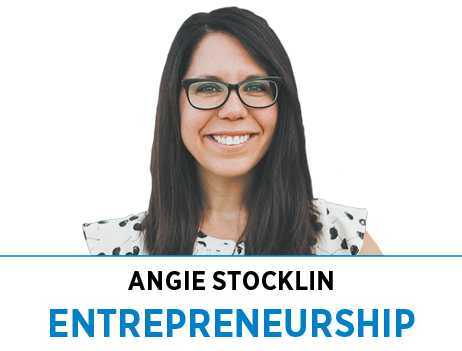Subscriber Benefit
As a subscriber you can listen to articles at work, in the car, or while you work out. Subscribe Now My co-founder, Randy, and I started One Click in 2005 and sold the business to FGX International in 2018. In previous columns, I’ve discussed some of our leadership and business strategies, and we all know how much I love talking about company culture. But new people I meet are often curious about why we decided to sell, the process of selling our business, and what the business looked like after the acquisition. You might be curious, as well. Over the next four columns, I will explore each of these areas in more detail.
My co-founder, Randy, and I started One Click in 2005 and sold the business to FGX International in 2018. In previous columns, I’ve discussed some of our leadership and business strategies, and we all know how much I love talking about company culture. But new people I meet are often curious about why we decided to sell, the process of selling our business, and what the business looked like after the acquisition. You might be curious, as well. Over the next four columns, I will explore each of these areas in more detail.
When we were building One Click, we didn’t have a clear exit strategy in mind. Because of our business model and bootstrapped growth, an IPO was never really on the table for us, but we intentionally kept our exit options and exit timing flexible in our planning model.
So how did we decide the time was right to sell? Every entrepreneur has his or her own story and reasons for selling, but this is our story.
Economic climate
After the 2016 election, there was a lot of uncertainty around the economic climate and how it might impact our business. The newly elected president was promising trade wars and high tariffs on imported goods—all our products were being made in China and Taiwan—and news outlets were predicting a looming recession. As a self-funded company that relied on healthy margins to stay in business, we were concerned about how to plan for these unknowns and how to navigate slimmer margins coupled with a slowdown in revenue.
Market indicators
In 2016, we had a steady trickle of incoming interest in our business, and by this point in the direct-to-consumer landscape, we had a healthy list of comparable acquisitions that led us to believe there would be interest in our business.
However, most of these companies had reached at least $100 million in revenue before their acquisition, and it would take us several more years to get to that point. We also knew through industry research that at least one of our three brands had a significant share of the online market, which could be attractive to acquisition partners.
Risk tolerance
You cannot be an entrepreneur unless you have some tolerance for risk. When we started One Click, our risk tolerance was really high as we didn’t have much to lose, and the upside opportunity was huge. We invested our personal money, personal assets and all our time into growing the business, and we continued, each year, to risk it all to try to grow the final reward.
By the end of 2016, we were no longer sure if we were willing to continue doubling down on risk without securing at least some reward for the money, time and career sacrifice we had spent on the business so far. It would take several more years of risk before we had the opportunity to hit $100 million in revenue and maximize our financial reward, and the uneasy economic climate made it hard to commit.
Opportunities for growth
As a self-funded company, growth was possible only if we continued to acquire customers at a cost that allowed us to be profitable, and our growth was limited to the amount of capital we had to invest in customer acquisition. Merging with another company, finding an acquisition partner, or finding someone to purchase a significant stake in the business might give us an opportunity to explore new acquisition channels and invest more money in those that were working well. This growth, in turn, would also allow us to continue growing our team and providing professional growth and leadership opportunities for our loyal team members.
In addition to growth for our revenue and our team, finding the right acquisition partner might also give us access to more sophisticated software systems, better insurance rates for our team and improved supplier relations.
Despite all the indicators above, deciding to sell One Click was really hard. We loved the company we were building, and working with the One Click team made me feel like the luckiest person alive every day.
To be honest, I didn’t want to sell. It was flattering and humbling to think that another company might want to purchase what we’d built from scratch out of our home, but the idea of handing over the reins to someone else was terrifying, and the mere thought of no longer working with our team still brings tears to my eyes.
But when you become a founder and start hiring a team, your personal desires take a back seat to what is most important to the company, and finding an acquisition partner was the best strategic and financial decision for the company. So, we decided to sell.
Next time, I’ll walk through what that process looked like for us.•
__________
Stocklin is an angel investor and exited founder who currently teaches entrepreneurship at Purdue University.
Please enable JavaScript to view this content.
